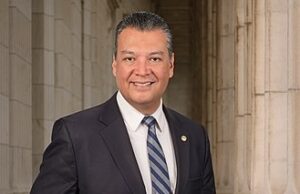Washington, D.C. – January 10, 2012 – (RealEstateRama) — The Consumer Financial Protection Bureau’s (CFPB) release on Thursday of a final rulemaking implementing key provisions of the Dodd-Frank Act cements in place important consumer protections in the mortgage market, CFA said today.
The rulemaking implements provisions in Title XIV of the Dodd Frank Act that require lenders to base mortgage underwriting decisions on a reasonable expectation that the borrower actually has the ability to repay the loan. Failure to meet this standard or follow the rules outlined in today’s release could subject the lender to lawsuits, and consumers could raise such failures as a defense against foreclosure.
A key component of the statute was the creation of a special designation of so-called “Qualified Mortgages.” Lenders making loans that qualify under this definition would be presumed to have met the ability to repay test and benefit from limited protection from lawsuits. This provision, which includes numerous important consumer protections, was designed to encourage lenders to make such safe and sustainable loans the standard option for consumers.
“The ability to repay and QM rules were mandated by Congress in response to rampant misbehavior and exploitation of consumers by mortgage lenders in the run up to the mortgage bust,” noted CFA’s Director of Housing Policy Barry Zigas. “The QM definition was meant to encourage lenders to offer the safest and soundest mortgages in return for some protection from liability for the ability to repay test. We are disappointed that the Bureau is not providing the highest level of consumer protection to prime loans, instead offering lenders a legal safe harbor from any challenges to loans meeting the standard rather than the ‘rebuttable presumption’ that the statute authorized and we strongly advocated in comments on the proposed rule. “
However, under the final rule, non-prime, higher priced loans would be covered by the rebuttable presumption. “While we would have preferred that the rebuttable presumption applied to all QM loans, we applaud the Bureau’s decision to extend this higher level of protection to those consumers who are at the most risk,” Zigas added.
The final rule also establishes a flexible test for determining whether a loan meets the QM test. Mortgage loans to consumers whose obligations would total 43 percent or less of their income, and that meet all the other required features and mortgage terms, would be designated as QM. In an important addition, the Bureau has also included loans that meet the underwriting criteria of the Federal Housing Administration (FHA) and, while under conservatorship, Fannie Mae and Freddie Mac.
“While a clear so-called ‘bright line’ test for QM will give lenders and investors certainty about whether a loan is QM or not, the Bureau wisely chose to expand this test. FHA and GSE underwriting examines several different factors and their interactions,” Zigas explained. “This will help ensure access to safe and sustainable mortgages. This is especially important for low and moderate income consumers, whose debt levels may be above the threshold but who have shown the ability to repay loans when these other considerations are accounted for,” Zigas said. “Good underwriting considers a range of factors, and the Bureau’s rule acknowledges this.”
The Bureau is seeking further comment on a number of remaining issues, including how to calculate loan originator compensation in the context of the statutory cap on points and fees in QM loans. “We look forward to reviewing the Bureau’s proposals,” Zigas said. “We are especially focused on insuring that the use of yield spread premiums is carefully and effectively regulated. These fees can add significant costs to consumers without providing benefits. QM loans should not encourage such practices.”
The final rule was held for public release until midnight tonight, but summaries and fact sheets from the Bureau were available earlier. These comments are based on those sources. CFA may have additional comments on the final rule once it has been made publicly available.
Contact:
Barry Zigas, Director of Housing Policy, 202-679-0169
Consumer Federation of America is an association of nearly 300 non-profit consumer organizations that was established in 1968 to advance the consumer interest through research, education and advocacy.














